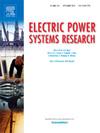考虑风-电池储能联合系统频率调节的电池储能系统最优容量分配策略
IF 4.2
3区 工程技术
Q2 ENGINEERING, ELECTRICAL & ELECTRONIC
引用次数: 0
摘要
随着可再生能源并网的不断推进,系统频率稳定性问题日益突出。由于电池储能系统(BESS)的快速响应和双向功率调节特性,可以帮助缓解风电波动对电网频率的影响。因此,在保证系统频率稳定的前提下,协同优化风电机组控制参数,经济地分配BESS容量是十分必要的。考虑风电渗透率的影响以及风-电池储能联合系统频率调节的经济性和性能,提出了考虑风-电池储能联合系统频率调节的最佳容量分配策略。首先,建立了小波变换参与的系统频响模型。其次,将系统的FR效应与BESS容量分配的经济性考虑相结合,建立了BESS容量分配的数学模型。该模型结合BESS生命周期理论,将电网的FR、WT和BESS的运行状态作为约束条件。应用反向搜索粒子群优化算法求解了不同风电穿透度和优化小波变换下垂系数下的BESS容量分配方案。仿真结果表明,在保持系统稳定性的同时,考虑小波变换参与FR,所提出的BESS容量分配方法可以降低所需的BESS容量和相关成本本文章由计算机程序翻译,如有差异,请以英文原文为准。
Optimal capacity allocation strategy of battery energy storage system considering the frequency regulation of wind-battery energy storage combined system
With the continuous integration of renewable energy sources into the grid, the issue of system frequency stability has become increasingly prominent. Due to the fast response and bidirectional power regulation characteristics of battery energy storage system (BESS), they can help mitigate the impact of wind power fluctuations on grid frequency. Therefore, it is essential to co-optimize wind turbine (WT) control parameters and allocate BESS capacity economically while ensuring system frequency stability. Considering the influence of wind power penetration and the economic and performance aspects of frequency regulation (FR) by wind-BESS, a method for optimal capacity allocation strategy of BESS considering the FR of wind-battery energy storage combined system is proposed. Firstly, the system frequency response model with WT participation in FR is constructed. Secondly, a mathematical model for BESS capacity allocation is developed by integrating the system's FR effect and the economic considerations of BESS capacity allocation. This model combines BESS life cycle theory and incorporates the FR of the grid and the operational states of WT and BESS as constraints. The reverse search particle swarm optimization algorithm is applied to solve the BESS capacity allocation schemes under varying wind power penetration and optimized droop coefficient of the WT. Simulation results demonstrate that the proposed BESS capacity allocation method can reduce the required BESS capacity and associated costs by considering WT participation in FR while maintaining system stability.1
求助全文
通过发布文献求助,成功后即可免费获取论文全文。
去求助
来源期刊

Electric Power Systems Research
工程技术-工程:电子与电气
CiteScore
7.50
自引率
17.90%
发文量
963
审稿时长
3.8 months
期刊介绍:
Electric Power Systems Research is an international medium for the publication of original papers concerned with the generation, transmission, distribution and utilization of electrical energy. The journal aims at presenting important results of work in this field, whether in the form of applied research, development of new procedures or components, orginal application of existing knowledge or new designapproaches. The scope of Electric Power Systems Research is broad, encompassing all aspects of electric power systems. The following list of topics is not intended to be exhaustive, but rather to indicate topics that fall within the journal purview.
• Generation techniques ranging from advances in conventional electromechanical methods, through nuclear power generation, to renewable energy generation.
• Transmission, spanning the broad area from UHV (ac and dc) to network operation and protection, line routing and design.
• Substation work: equipment design, protection and control systems.
• Distribution techniques, equipment development, and smart grids.
• The utilization area from energy efficiency to distributed load levelling techniques.
• Systems studies including control techniques, planning, optimization methods, stability, security assessment and insulation coordination.
 求助内容:
求助内容: 应助结果提醒方式:
应助结果提醒方式:


